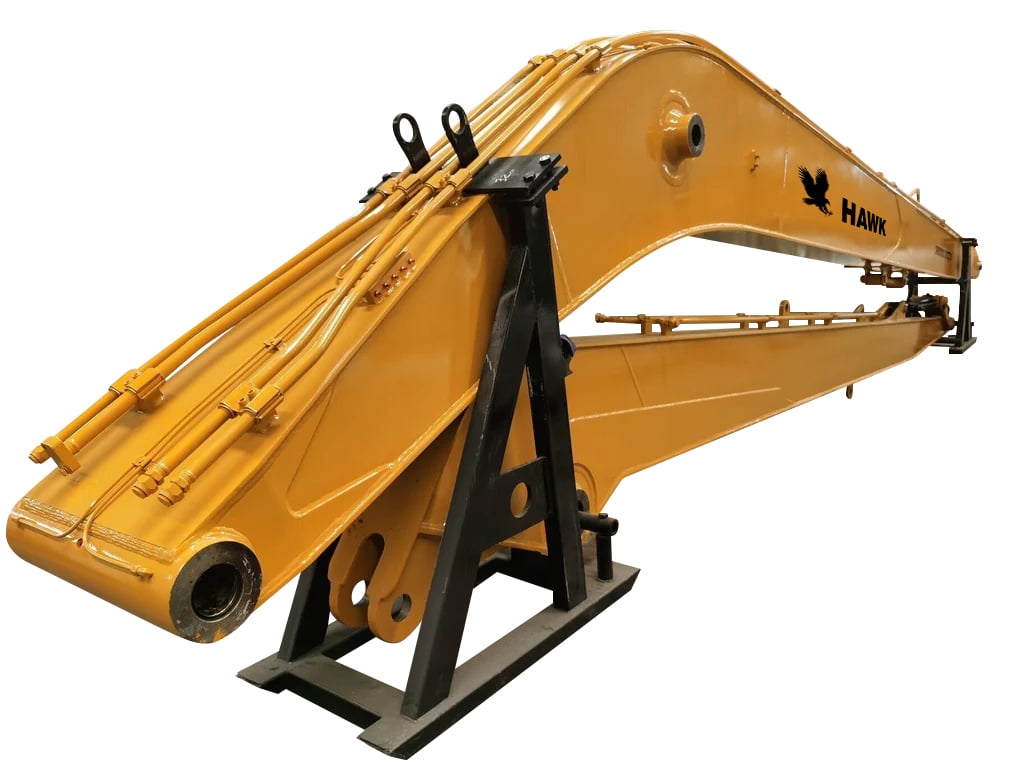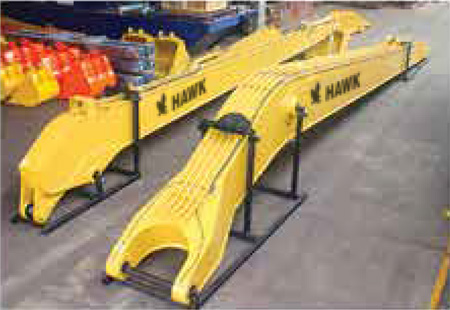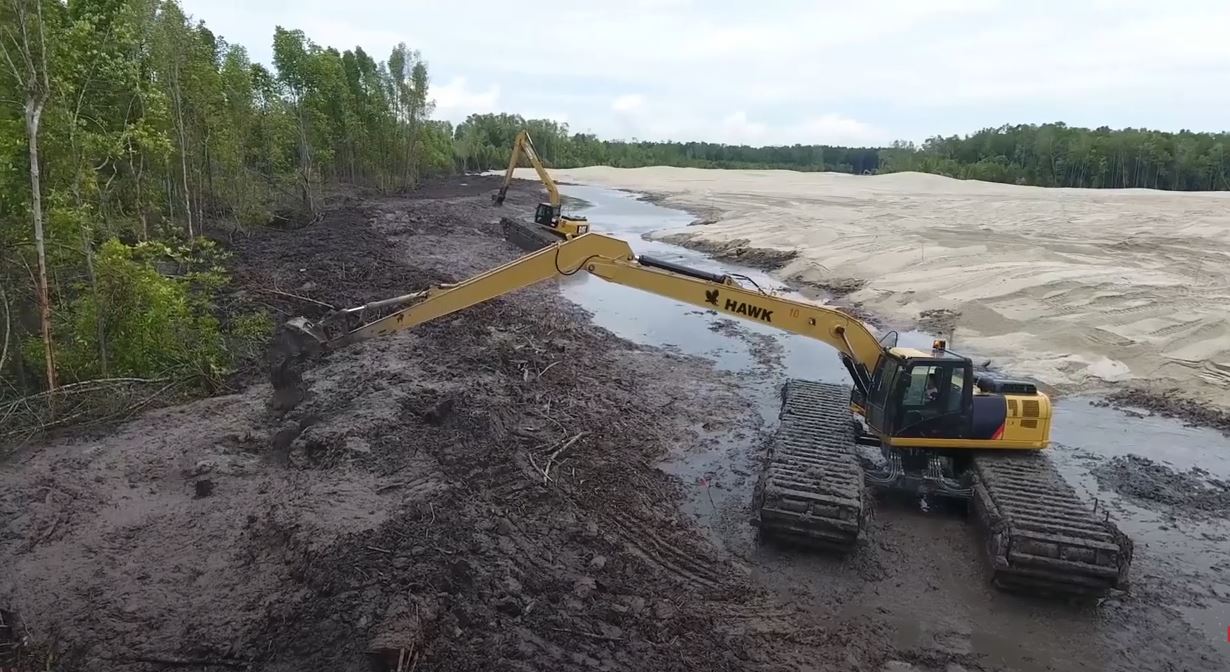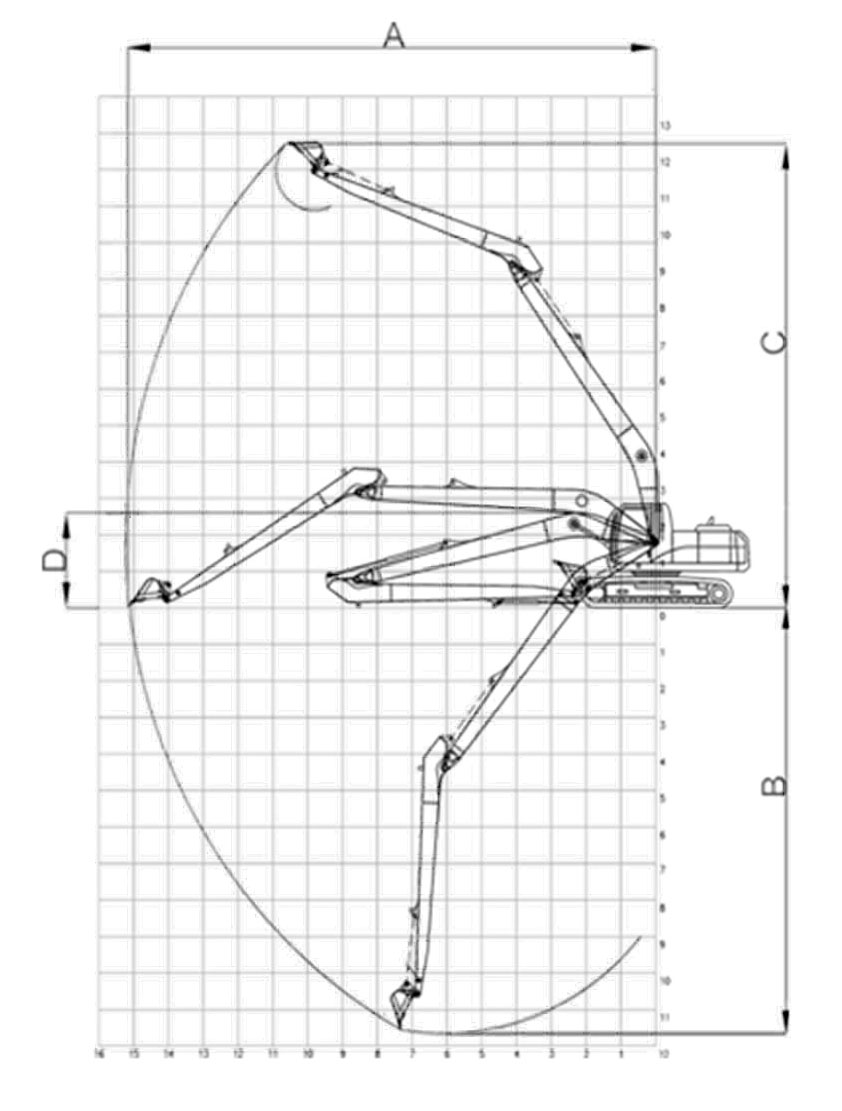Long Reach Arm | LRA726

A long reach arms excavator is a specialized piece of construction equipment that is designed to reach deeper and farther than a standard excavator. This type of excavator is typically used in situations where a standard excavator would not be able to reach, such as when excavating deep trenches or when working on steep slopes. The long reach arms excavator is also used in situations where a standard excavator would be at risk of tipping over or damaging the terrain.
The long reach arms excavator is equipped with an extended boom and arm that can reach up to three times the length of a standard excavator arm. This extended reach allows the excavator to access hard-to-reach areas, such as deep pits, steep slopes, or tall buildings. The excavator is operated by a skilled operator who controls the arm and the bucket using joysticks in a cab located at the end of the extended boom. The excavator can be fitted with a variety of attachments, including buckets, grapples, and hammers, to perform a wide range of tasks.
One of the key advantages of a long reach arms excavator is its ability to excavate deep trenches. In traditional excavation, trenches are dug using a series of backhoes, which must move back and forth to dig progressively deeper. This process can be time-consuming and can result in a wide trench that takes up a lot of space. With a long reach arms excavator, the operator can dig a deep trench in a single pass, resulting in a narrower trench that takes up less space.
HAWK Long Reach Specs
Our production facility is ISO 9001, certified in 2011. HAWK can guarantee consistent quality manufacturing and timely delivery of our long-reach systems, and other excavator products. Along with our ISO 9001 certification, HAWK is also CE certified; each HAWK Long Reach System bears the CE logo. Each and every HAWK Long Reach System is manufactured to comply with our quality system to ensure that our customers always receive the high-quality product that they require.
Product Specifications
Model | LRA2762 |
|---|---|
Excavator Weight (ton) | 27-32 |
Length | 62.4 ft (19 m) |
Boom Length | 33.12 ft (10.4 m) |
Arm Length | 25.1 ft (7.7 m) |
Bucket Capacity | 0.79 yd3 |
Benefits of HAWK Excavator Long Reach Arms

Increased reach and depth: One of the primary benefits of using a long reach arm excavator is that it allows for increased reach and depth when excavating. With an extended boom and arm, the excavator can reach farther and deeper than a standard excavator, making it easier to access hard-to-reach areas.
Improved productivity: Long reach arm excavators can help improve productivity on construction sites because they can excavate larger areas in less time. The extended reach of the excavator allows for more efficient digging and material handling, which can help save time and increase productivity.
Increased safety: Long reach arm excavators can also improve safety on construction sites by reducing the need for workers to enter excavated areas. Because the excavator can reach farther and deeper, workers can stay at a safe distance from the excavation site, reducing the risk of accidents and injuries.
Versatility: Long reach arm excavators are highly versatile and can be used for a variety of tasks, including excavation, demolition, and material handling. With the ability to switch out different attachments, the excavator can perform a wide range of functions on a construction site.
Reduced environmental impact: Because long reach arm excavators can excavate deeper and reach farther, they can often complete excavation tasks with less disturbance to the surrounding environment. This can help reduce the impact of construction projects on nearby ecosystems and wildlife habitats.
Increased accuracy: Long reach arm excavators are also capable of greater precision than standard excavators. The extended reach and precision controls allow operators to work with greater accuracy, which can be important for tasks such as excavating around underground utilities or digging precise trenches.
Overall, the benefits of using a long reach arm excavator make it an attractive option for many construction projects. The increased reach, productivity, safety, and versatility of the excavator can help improve construction efficiency and reduce the impact of construction on the surrounding environment.
Features of HAWK Excavator Long Reach Arms
Extended boom and arm: The extended boom and arm are the most prominent features of a long reach arms excavator. They allow the excavator to reach farther and deeper than a standard excavator, making it easier to access hard-to-reach areas.
Large bucket capacity: Long reach arms excavators often have larger bucket capacities than standard excavators. This allows for more efficient digging and material handling, which can help increase productivity on construction sites.
Versatility: Long reach arms excavators are highly versatile and can be used for a variety of tasks, including excavation, demolition, and material handling. With the ability to switch out different attachments, the excavator can perform a wide range of functions on a construction site.
Precision controls: Long reach arms excavators are often equipped with precision controls that allow operators to work with greater accuracy. This can be important for tasks such as excavating around underground utilities or digging precise trenches.
Operator cab: The operator cab is located at the end of the extended boom and arm and is equipped with joysticks and other controls that allow the operator to control the excavator’s movements. The cab is designed for maximum comfort and visibility, which can help improve operator productivity and safety.
Safety features: Long reach arms excavators often come equipped with a range of safety features, such as emergency stop buttons and safety interlocks. These features help ensure that the excavator is operated safely and can help reduce the risk of accidents and injuries on construction sites.
Engine power and hydraulic system: Long reach arms excavators have powerful engines and hydraulic systems that enable them to handle heavy loads and perform challenging tasks. The hydraulic system provides the force needed to move the boom and arm, while the engine provides the power needed to operate the excavator’s other functions.





